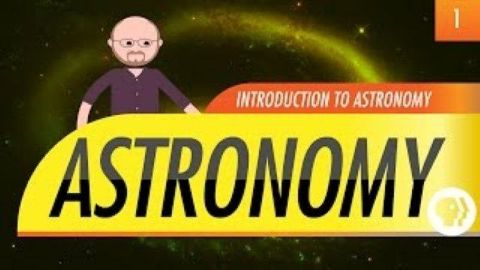Crash Course Astronomy • 2015 - 2016 • 6 episodes • 8h:32m
Welcome to the first episode of Crash Course Astronomy. Your host for this intergalactic adventure is the Bad Astronomer himself, Phil Plait. We begin with answering a question: "What is astronomy?"
#1 • Astronomy
Today on Crash Course Astronomy, Phil invites you to head outside and take a look at all the incredible things you can see with your naked eye.
#2 • Astronomy
This week we build on our naked eye observations from last week and take a look at the cyclical phenomena that we can see at work in the universe.
#3 • Astronomy
In this episode of Crash Course Astronomy, Phil takes you through the cause and name of the Moon's phases.
#4 • Astronomy
Today Phil explains how telescopes work and offers up some astronomical shopping advice.
#6 • Astronomy





